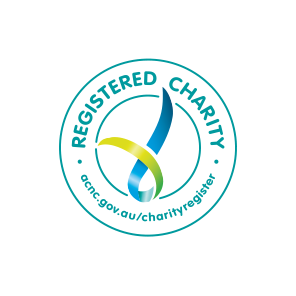
Whether you’re eyeing that dream job, internship, or scholarship, mastering the art of CV and cover letter writing can open doors to a world of possibilities and empower you to reach your full potential.
So if you’re wondering how to write a CV and cover letter that hits the mark and helps you stand out, here are some top tips to get you started.
The difference between a CV and a cover letter
Your CV (or Curriculum Vitae) provides an overview of your academic achievements, extracurricular activities, skills, and experiences. It’s essentially a snapshot of your education, experience, and achievements that’s designed to grab the attention of potential employers.
A cover letter is more of a personal introduction to who you are. It highlights why you’re the perfect fit for the role or opportunity and touches on how your skills and experience align with the specifics of the role.
Crafting Your CV
Now that you know the purpose of your CV, let’s take a look at how to create one that really shines.
Gather your information
A good place to start when creating a CV is to gather all of the relevant information you need. This includes your academic qualifications, awards, volunteer experiences, extracurricular activities, and any part-time jobs. Don’t forget to include any leadership roles, clubs, or projects you’ve been involved in.
Include your personal details
A good CV should always include your name, contact information, and address at the top. This one might seem obvious, but you’d be surprised at how many applications get overlooked because they’re missing this crucial information. Make sure you have a professional-looking email address—[email protected] isn’t going to make a great first impression!
Write a short personal statement
Follow your contact details with a brief personal statement that highlights your goals, strengths, and aspirations. This is likely the first thing a potential employer will read on your CV so it should be short and to the point. To really stand out, try to create a unique personal statement for each application.
For example, if you are looking to get into the design industry and are applying for a design assistant role, your personal statement might look like:
I am a recent graduate (or current student) from (name of your high school) looking to apply my skills and passion for design in an entry-level assistant role. I have spent the last five years designing and creating dresses to sell at the monthly local arts fair. I am a quick learner who thrives on challenges.
Put your education front and centre
List your current school name, year level, and expected graduation year. You can also include your subjects, grades, and any relevant achievements or certifications. For example, if you’re looking to get into the medical field, you might include a certification for a CPR course you completed.
List your experience and extracurricular activities
If you’ve had any part-time jobs, list those here! Things like sporting activities, volunteer work, or even babysitting are great to include—as long as you can demonstrate how those activities have given you valuable experience and helped you grow your skills.
Showcase your skills
If you haven’t got much experience, things like teamwork, communication, creativity, and computer skills are all great! Remember to not just list your skills but also briefly explain how you demonstrate them. For example, you could say you have good teamwork skills from working on a school project with a group of your peers.
Note your references
You should always have a list of people on hand who are happy to provide a good reference for you. These could be teachers, sports coaches, or past employers. It’s good practice to write something like, ‘References available upon request’ on your CV. That way, you can give your referee a heads-up before they are contacted.
Remember these key points:
- Use an easy-to-read font like Arial or Times New Roman
- Put your headings in bold and use bullet points
- Proofread your CV! Have someone else take another look over it for errors
- Keep your CV to one page. You can extend to two pages if you really need to, but the shorter the better.
Writing Your Cover Letter
Your cover letter is your opportunity to tell your story and express your enthusiasm for the role or opportunity.
Do your research
Before you begin writing your cover letter, dig a little deeper into the company or organisation. In particular, take a look at some of their values and goals so you can demonstrate your understanding of their ethos.
Start strong
Address your cover letter to the hiring manager or program coordinator by name (if possible). If you can’t find a name, writing ‘Dear Hiring Manager’ will usually work. Start with a strong opening paragraph, stating why you’re interested in the position and what makes you uniquely qualified. Make sure to mention the specific job title or program you’re applying for.
Highlight your skills
Briefly mention two or three key skills you listed in your CV and talk about how they make you a perfect fit. You should highlight examples of where you’ve demonstrated leadership, teamwork, problem-solving, or initiative, both in and out of the classroom.
Show your passion
Cover letters are where you can let a bit of your personality shine through. Aside from showcasing your skills, you can briefly explain what interests or excites you about the company, industry, or program.
Close your letter well
Your closing paragraph should repeat your enthusiasm for the opportunity and express your willingness to contribute. Remember to thank the reader for considering your application and sign off professionally—a ‘Kind regards’ or ‘Yours sincerely’ should work nicely here.
Remember these key points:
- Proofread your cover letter. Have someone else take another look over it for errors.
- Keep your cover letter to one page
- Include keywords from the job description where you can
- Customise your cover letter for each job application
Remember, your CV and cover letter are not just pieces of paper—they’re your opportunity to shine and make a lasting impression. Embrace the process, unleash your potential, and you’ll be on your way to a bright and promising future.
These valuable tips have been provided to us by WOW Recruitment, a great supporter of HMEF.



